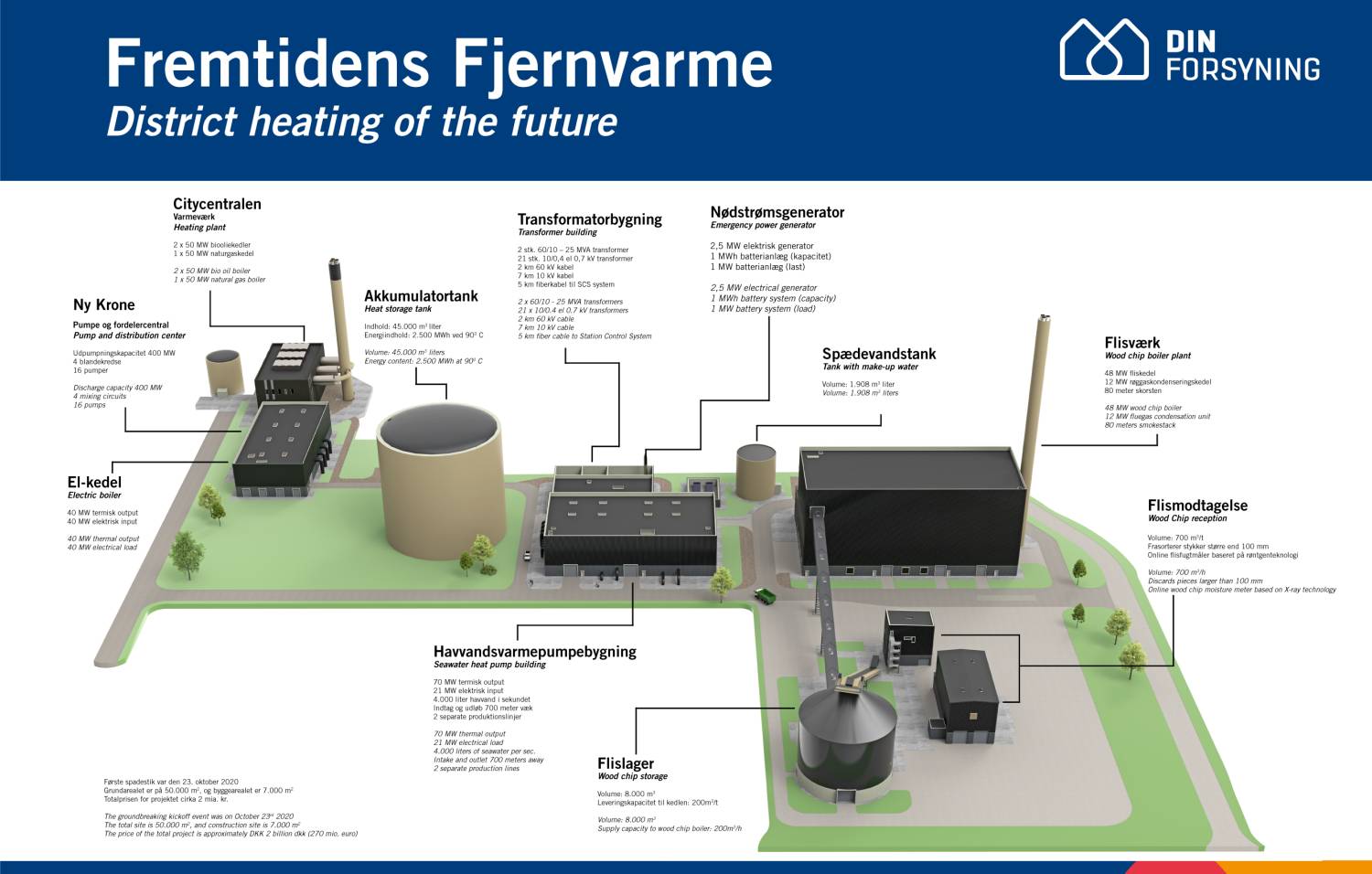Smaller units create new opportunities
DIN Forsyning have launched a plan for converting the heat produced on coal to sustainable heat generation.
We will combine many small and different solutions, linked to a central distribution network. It provides a flexible electricity-powered utilization of waste heat from waste to energy plant, local industry, wastewater treatment, seawater, future data centers, and eFuel plants.
It is a modular solution, as each part is only used, when reasonable – economically and environmentally. When the wind blows and electricity is supplied from wind turbines the heat pumps start, or when industrial production is high the waste heat is utilized.
As the electricity production in Northern Europe becomes more based on wind, hydro, and solar, balancing the grid is an increasing challenge – especially for Denmark which is building more unreliable wind and solar and phasing out reliable coal fired power stations.
The next generation must be modular and hybrid
We believe "modular" is the right solution for the next district heating generation. Instead of a few large units, we believe the heat should be supplied by several smaller sustainable units. Our plan involves a new seawater heat pump – the largest in Denmark producing 50 MW. The overall production system will include a new biomass boiler plant, electric boilers, natural gas boilers, and industrial waste heat. The goal is optimal utilization of waste heat, perhaps including new seasonal heat storage capacity and future technologies.
The "modular" idea requires planning, but it allows us to implement sustainable energy easier - even from smaller heat sources. To provide reliable, cheap district heating to our customers when the coal power station ends the production in early 2023, we had to use well-known technologies which is less sustainable than desired. But we will phase them out earliest possible following the changes in the entire energy system. An important design parameter is to have investment flexibility thus minimizing the risk of stranded assets. The next generation of district heating will be hybrid and decentralized solutions.
 Klik for større billede
Klik for større billede